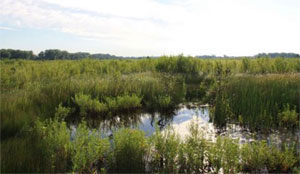Criticized for its rampant use of water, Coca-Cola’s goal is to replenish 100% of all the water it uses by 2020.
In addition to reducing water consumption in manufacturing 25% by 2020 (from 2010 levels), the company is working with the US Department of Agriculture to restore damaged watersheds in our National Forests, which supply drinking water to over 60 million people.
Under the five year agreement, watersheds will be restored across the US that have been damaged or altered by development, wildfires and agriculture.
Because of federal budget cuts over the past few years, the USDA has turned to partnerships to get this kind of work done. Federal dollars spent on these projects are being matched two-to-one by Coca-Cola, the National Fish and Wildlife Foundation, and the National Forest Foundation.
Restoring watersheds is critically important at a time when increased demand from manufacturers, residents and farmers is dovetailing with extreme drought, floods and wildfires, especially in the West. Because of so many out of control wildfires, the land is stripped of trees and vegetation which previously helped absorb water and prevent runoff. Without vegetation, the land hardens like cement and rains run off in a torrent, bringing ash and debris into waterways.
Stream channels that were impacted by severe wildfires in the Denver area are now rehabilitated and water has been returned to its natural flow in California’s Sierra Nevada Mountains, which serves San Francisco’s East Bay.
One of the many wetlands being restored at Midewin National Tallgrass Prairie, outside Chicago.

New projects:
- a wetland will be restored to replenish the aquifer underlying Midewin National Tallgrass Prairie near Chicago. Old agricultural drains are being removed which have been diverting 14 million gallons into waterways each year, preventing water from soaking into the ground.
- invasive plants will be removed in California’s Angeles National Forest, improving water supplies for residents of Los Angeles and wildlife habitat.
- a stream in New Mexico will be returned to its natural flow after being altered by mining, improving water quality and groundwater storage.
- a stream in the Lake Michigan watershed will also be restored to its natural flow, which will reduce flooding, enhance aquatic habitat, and improve water quality.
Coca-Cola is among the leading users of renewable energy and has been making progress on addressing climate change, but has a long way to go. It has a goal of using plant-based material for all packaging by 2020 and committed to phasing out supergreenhouse has HFCs by 2015.
On the down side, Coke has been one of the bigger funders preventing GMO labels on foods.
Coke is among the companies supporting efforts to map world-wide water risks to improve water management and direct private companies away from those areas.
Read our article, Coca-Cola Honored by Fortune 500 Peers.
